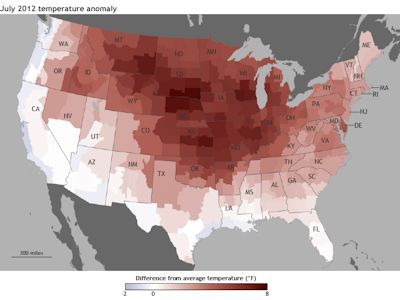
Figure 1: July 2012 Temperature anomalies Source: NOAA |
If you thought it was hot in July in coastal North Carolina, you’re not alone. The month was the hottest month in recorded history for the United States. Following the exceptionally warm winter and early spring, we may be getting an early glimpse of how future climate will look.
Supporter Spotlight
On August 6, NOAA’s National Climatic Data Center reported that July was the single warmest month in the 117-year temperature history of the continental United States. During the month, over half the continental United States experienced temperatures more than 2 degrees above average, an unprecedented area and magnitude of warmth (Figure 1).
July’s record warmth was just the latest in an exceptional year of heat for the continental United States. A late June super-heat wave led to 208 locations tying or breaking their all-time highest temperature records, despite that June isn’t even the warmest month of the year. From Alaska to Arkansas, a vast swath of the country set or tied their highest-ever June temperatures during this heat wave (Figure 2).
And the hot summer is a continuation of the status quo for past several months. March was the warmest March in recorded history for the continental United States. So far, this year is more than 4 degrees warmer than the 20th century average, smashing records of previous warm years (Figure 3).
All told, the past 12 months have been the warmest 12-month period in recorded history for the Unites States. In fact, since May of 2011, every month has been warmer than its climatological average, a 14-month stretch of warmer-than-average temperatures. What are the odds that 14 straight months would be warmer than average?
Of course, 14 straight months of anomalous warmth are more likely if the chance of warmth is better than 50/50. Since the 1980s, scientists have postulated that carbon dioxide-forced global warming would lead to global increases in the frequency of heat waves and droughts, in effect “stacking the odds” in favor of warmer conditions.One can assume there is a 50 percent chance that any given month will be warmer (or cooler) than average. The odds of having 14 such warmer-than-average months in a row, as we’ve had since May 2011, would thus be equivalent to the odds of flipping a coin heads 14 times in a row: one in 16,000. It should be noted here that this probability assumes that the chances of any given months being warmer or cooler than average are independent of all the other months, which isn’t necessarily true. In reality, the odds are probably slightly higher than one in 16,000, but difficult to quantify exactly.
Supporter Spotlight
In 1981, climatologist Jim Hansen of the Goddard Institute of Space Studies, writing in the journal Science, hypothesized that “the creation of hot, dry conditions in much of the western two-thirds of the United States” as a result of additional atmospheric carbon dioxide.
Thirty-one years later, Hansen’s predictions appear substantiated, as the United States is currently in grips of the worst drought since the 1930s Dust Bowl. Almost two-thirds of the country is experiencing drought conditions, and the U.S. Department of Agriculture is projecting that the 2012/2013 corn yield will be the lowest in 17 years due to “extreme heat and dryness” across the Great Plains. As a consequence, global food prices spiked 6% in July, led by a 17 percent increase in the price of cereals and a 23 percent surge in the price of corn (Figure 4).
As with any climatic changes, there are winners and losers. Locally, farmers in North Carolina may gain from the high corn prices, with the USDA projecting a 30 percent increase in N.C. corn production over last summer despite the drought conditions. Globally, however, rising world food prices tend to exacerbate political and social conflict, especially in developing countries, according to the World Bank.
Will the warmth continue? As far as the record books are concerned, it doesn’t matter: the first half of 2012 has been so warm that, even if temperatures for the rest of year are in line with 20th century averages, 2012 will still be the warmest year in U.S. history, according to the National Climatic Data Center in Asheville.
And with a developing El Niño historically favoring a warmer late fall in the central and eastern United States (Figure 5), it is likely that the second half of 2012 will continue to be warmer than average.
Globally, the hot summer of 2012 in the United States contrasts with cooler-than-average conditions in the United Kingdom and other locations. But the balance isn’t complete: Like every year since 1977, global temperatures in 2012 will be above the 20th century average.
By 2030, global temperatures are expected to be 0.9 degrees warmer than today, rising to almost 2 degrees warmer than today by 2050. With such an increase in background warmth, hot months, and hot years, will undoubtedly become hotter.
So go ahead and pencil in 2012 as the warmest year in US history. Just don’t expect it to stay in the record books for very long.







